Beginners guide to real estate accounting - Keeping Your Finances on track
People often think that accounting is a complex and difficult task – something only suited for those with years of experience and qualifications. However, this isn’t always the case! In fact, if you’re interested in real estate, then understanding some key accounting concepts is essential.
This guide will provide you with an overview of the most important concepts to get started. So whether you’re a seasoned pro or just starting out, read on for valuable insights into real estate accounting.
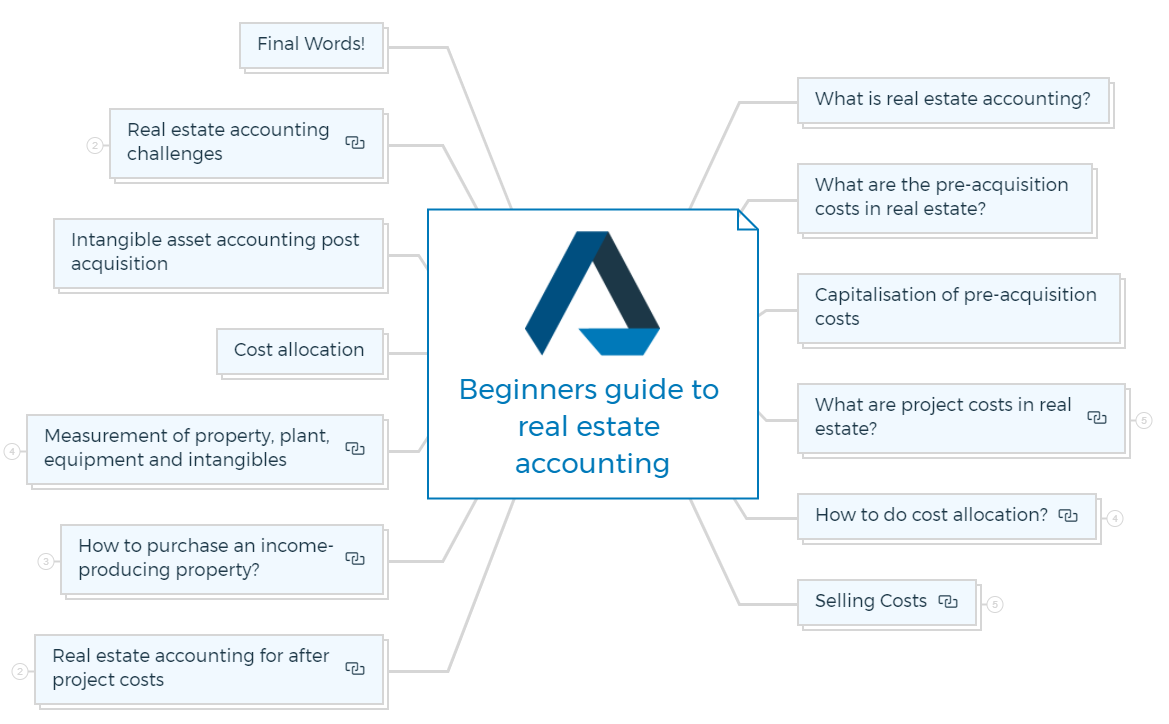
What is real estate accounting?
Real estate accounting is tracking and reporting financial transactions related to real estate. It includes keeping track of income and expenses and assets and liabilities.
The most important thing to keep in mind with real estate accounting is that all income and expenses are properly accounted for. This will ensure that your books are accurate and up-to-date, which will, in turn, help you make sound financial decisions about your real estate portfolio. Let's understand some basics of real estate accounting.
What are the pre-acquisition costs in real estate?
Costs incurred for the purpose of, but before the purchase of real estate are considered pre-acquisition costs. They include a wide range of expenses, such as:
- Payments to obtain an option
- Legal fees
- Architectural fees
- Additional professional fees
- Environmental research costs
- Appraisal expenses
- Survey expenses
- Costs of planning and design
- Zoning and traffic studies costs
- Costs of feasibility studies
Capitalisation of pre-acquisition costs
All additional pre-acquisition costs (excluding option costs) must be capitalised if the property (or an option to purchase it) is probable and the costs meet the following criteria:
- The costs must be linked to the property.
- If you had already purchased the property, the costs would be capitalised.
The project is not regarded as probable if the purchaser is not actively looking to acquire the property, cannot finance or secure financing for the property, or if the property is not expected probable.
- Any costs incurred before a project is assessed must be expensed as incurred.
- Costs incurred before the project becomes probable cannot be capitalised if the project becomes probable afterwards.
Pre-acquisition costs that match the criteria mentioned above are capitalised.
- Capitalised pre-acquisition costs are included in project costs once the property is acquired.
A company's capitalised pre-acquisition costs are charged to expense if the company deems that the property acquisition is no longer probable.
Let's understand this capitalisation concept with a simple example -
You intend to construct five storage facilities in different locations across your country. There are ten appropriate properties found. The property types you want to develop the storage centres are available for sale, and you can get financing.
After completing various feasibility studies, you can decide which locations to use for the storage centres. You've already spent a few hundred dollars on consultants for feasibility studies.
Are you able to capitalise on the costs of these feasibility studies?
No. The costs incurred should be expensed because you have not indicated the particular locations for the storage centres.
What are project costs in real estate?
Costs explicitly associated with the acquisition, development, and building of a property project are project costs and can be capitalised.
The land is developed, and structures are built or repaired in some real estate developments. In addition to acquiring property, development and construction costs are required to finish the project.
Other real estate ventures focus solely on property acquisition, such as purchasing already-open shopping centres. Project costs related to the purchase, development, and construction of a real estate project must be capitalised as a cost of that project.
While this principle appears simple, understanding which costs are related to a real estate project can be difficult.
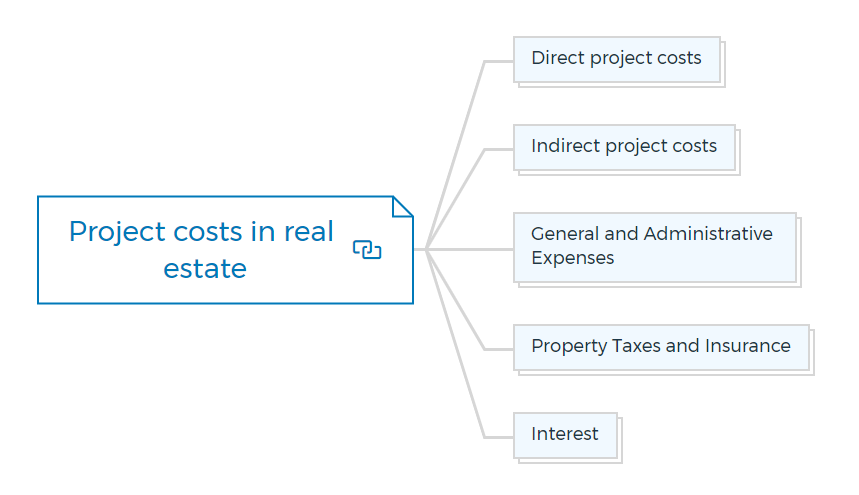
Direct project costs
Direct project costs are additional expenses directly tied to the property's acquisition, development, and construction.
Because you can conduct certain actions before or after the acquisition, they may involve the same types of expenses as pre-acquisition expenditures. Typical project costs include:
- Purchase cost
- Expenses owed to other parties.
- Fees owed to other parties for brokerage services
- Title search and title guarantee fees
- Construction-related real estate taxes
- Expenses for construction-related insurance
- Permit charges
- Engineering costs
- Costs of demolition
- Costs of construction (materials, labour)
- Amenities cost
- Donated property
Indirect project costs
Indirect project costs are capitalised if directly related to the acquisition, development, or building of a real estate project.
Internal project costs that are indirect include:
- Planning department costs
- Construction administration costs (for example, the costs of a field office on a project site)
- Costs incurred internally for cost accounting or project design
- Depreciation of directly used construction machines and equipment
- Employee perks and payroll expenditures for those working on the project
A cost accounting system and proper documentation are required to support cost capitalisation of internally incurred indirect costs.
For example, in-house designers may track time to determine the percentage of their salary allotted to a project. Non-project-related indirect costs, such as general and administrative expenses, are expensed as incurred.
Accounting for certain costs and activities related to property, plant, and equipment caps indirect costs at:
- Direct costs associated with a certain property
- Taxes and insurance on the component of the property under construction
- Costs of demolition incurred in connection with the purchase of PP&E if demolition is possible and expected to occur within a reasonable time after purchase.
Accounting for certain costs and activities related to PP&E states that capitalisation of directly identifiable indirect project costs should be limited to:
- Direct expenses to acquire, build or install the property.
- Employees' salaries and benefits expenditures associated with the project
- Depreciation of construction and installation machinery
- Construction or installation inventory costs
General and administrative expenses
Indirect costs, such as general and administrative expenses that do not relate to projects under development or construction, are charged to expenses as incurred without more direction on which expenses might be deemed general and administrative expenses.
Executive management, corporate accounting, acquisitions, office management and administration, marketing, human resources, and similar costs and services should all be charged to expense as they are incurred.
Property taxes and insurance
Property taxes, insurance, and interest are also known as holding costs. Taxes and insurance are capitalised as part of the property's cost during the preparation phase.
Property taxes and insurance are charged as incurred after the property is ready for use. Special considerations are required when only a piece of a real estate property is developed.
For example, a company owns 50 acres of property and is developing on 5 of them. Only interest and taxes on the 5 acres under construction would be appropriate for capitalising property taxes and insurance.
Interest
Real estate developments demand large sums of finance, and financing is a substantial expense. If unfinished real estate is purchased, interest expense incurred during development and construction is capitalised.
Interest capitalisation reflects the company's involvement in the real estate asset. As a result, when a real estate project is impaired, the interest projected to be capitalised in future periods is added to the write-down.
A real estate project's capitalisation rate is determined in four steps:
- Step 1: Determine eligibility for interest capitalisation.
- Step 2: Identify eligible expenses for interest capitalisation.
- Step 3: Choose a capitalisation period.
- Step 4: Calculate the capitalised interest cost.
How to do cost allocation?
When assigning project costs, one must consider both past and future costs. For example, residences are often sold in a master-planned community before facilities (including golf courses, pools, and parks) are built.
To properly reflect the cost of sales for each home sold, you must allocate a share of the future expenses for the development of the amenities of that home.
Choosing the best cost allocation strategy takes experience. You should allocate costs to those parts of a project that benefit from them. The goal is to maintain a consistent gross margin on sales throughout the project.

There are three methods to cost allocation -
1. Specific identification method
Whenever possible, expenditures are ascribed to specific components of a project. The specific identification approach is most commonly used in minor projects to allocate acquisition and direct construction expenses.
2. Relative value method
If specific identification is not feasible or practicable, you should allocate costs based on the relative value of the components. This strategy allocates expenditures based on the relative fair values of the project's components, either before construction or after.
3. Area methods or other value methods
If you can't employ the relative value approach or a real estate development company has not established the land's eventual use, you must use another cost allocation method.
The area technique allocates expenditures depending on lot size, structure square footage, or the number of units in a development. You should use the area approach only when using relative value methods would be impractical or impossible.
Selling costs
The costs of selling a real estate project are usually high. Selling costs can be accounted for one of three ways:
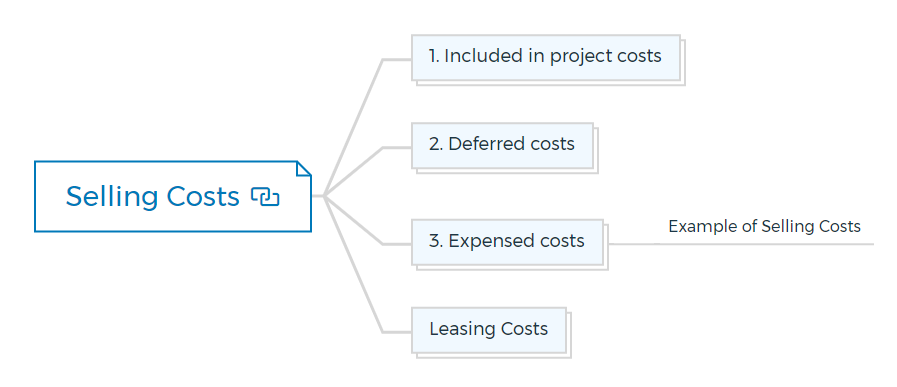
1. Included in project costs
If all of these criteria are met, selling charges are included in project costs:
- They are intended to be recovered via the project's sale or from accidental operations.
They are incurred because of:
- Tangible assets that are immediately employed to aid in the sale of the project throughout the selling period, or
- Services are rendered to secure regulatory approval for a sale.
2. Deferred costs
Notably, deferred selling charges are not included in project costs. Selling charges do not increase a project's completion percentage if the percentage-of-complete approach is used. Deferred selling costs are also not eligible for interest capitalisation.
Selling costs are delayed as prepaid costs if they match the following criteria:
They must be directly linked to successful sales activities, and sales must be expected to recover them. In the accrual accounting method, selling costs are incurred in the sale period; therefore, there is no requirement for deferral.
3. Expensed costs
Costs that do not fit the criteria for project cost capitalisation or cost deferral are expensed as incurred.
Example of Selling Costs
You market developed land. You have established that the deposit accounting method is suitable because the buyers of the lots have paid only nominal down payments. You plan to defer the following four types of costs associated with your efforts to sell the lots:
- Salary and commissions paid to salespeople, as well as related insurance, taxes, and benefit
- Corporate sales department expenses
- Customer and prospective customer telephone, hospitality, dinners, and travel charges
- Professional costs and title insurance for the sale
You want to delay these expenses as they arise through the company's attempts to sell the lots. Is it reasonable to postpone these expenses?
- To the degree that sales personnel's salary and commissions are directly connected to successful sales efforts, deferring them (together with any related insurance, taxes, and benefits) is reasonable.
- Corporate sales department costs are not directly linked to successful sales and should not be postponed.
- Deferring telephone, hospitality, meals, and travel expenditures for customers and prospective customers is appropriate to the extent that they are incurred directly for successful sales activities.
- Because title insurance and professional costs are directly related to the sales, deferring them is reasonable.
Leasing costs
Costs to rent a property project fall into two categories: (1) initial direct costs and (2) other than initial direct costs.
Rent charges for direct financing or sales-type leases are considered selling costs.
Direct costs incurred by the lessor in negotiating and closing leasing arrangements and direct costs associated with specific operations undertaken by the lessor.
Other costs connected to and expected to be recovered from future rental operations are delayed (capitalised). Costs of:
- Model units and their decor
- Rentals
- Temporary signs
- Openings
- Rental flyers unused
Deferred rental charges are amortised throughout the lease term. Deferred rental costs that are not immediately tied to income are amortised over the estimated benefit period. It starts when the project is largely finished and ready for habitation.
If a lease or group of leases is likely to be terminated, all unamortised capitalised rental costs connected with those leases are charged to expense.
Non-advertising costs, such as general and administrative costs, are expensed as incurred.
Real estate accounting for after project costs

Step 1 - Estimating the Project's Completion Date
The developer must finish tenant upgrades within one year of substantially completing the project. A rental project goes from non-operating to operating once it is largely finished and available for occupancy. There are some consequences -
- Rental income and running costs are recorded when they arise.
- Taxes and insurance are expensed when incurred.
- Interest capitalisation is no longer possible.
- Depreciation begins.
- Amortisation of deferred rental cost amortisation
Parts of a rental project that are substantially completed and occupied by tenants or held for occupancy must be accounted for as a separate project.
Amounts incurred will be split between the components under construction and those ready for occupancy.
Judgment is required to establish what defines a project and when it is substantially completed and ready for use.
Step 2 - Post-project costs
Costs will be incurred once the project is completed for properties created for company use or rental activities. Companies that own real estate have questions about accounting for costs incurred after a property is completed.
The accounting treatment of such costs depends on the type and the rationale for incurring them. The costs incurred may be start-up charges, recurring maintenance fees, renovation, remodelling, or refurbishment costs.
Normal repair and maintenance costs are usually expensed. However, other costs incurred remain unclear.
For example, should a new roof be capitalised if a corporation replaces a building's roof? Is it permissible or required to deduct the anticipated net book value of the current roof if this is the case?
Aside from the general guideline that expenditures that extend the life of the property or improve its value are capitalised, and routine recurrent repair and maintenance expenditures are expensed, there is little guidance on how to account for costs incurred after the project is completed.
How to purchase an income-producing property?
A deal to purchase income-producing real estate may be construed as purchasing a business or an asset/asset group. Accounting requires determining whether an acquisition is of a business or an asset/asset group.

Buying a business
A business is "an integrated set of activities and assets capable of being undertaken and managed to generate a return to investors or other landlords, members, or participants directly in the form of dividends, decreased expenses, or other economic benefits."
Two aspects must be present to conduct and administer such an integrated set of activities and assets:
- Inputs
- Processes applied to those inputs, which together create outputs.
If the integrated group of activities and assets has no outputs, the purchaser should evaluate other considerations. These include, but are not limited to:
- Commenced main activities
- Has personnel, intellectual property, and other inputs and processes
- Is pursuing an output plan
- Obtain access to clients who will buy the outputs
Further, a company need not have all inputs or processes required to run it as a business if market players can buy it and continue to produce outputs.
Most income-producing property purchases are accounted for as company purchases.
Exceptions include purchasing buildings that do not require active management or major operations, such as a warehouse leased to a single tenant.
Buying an asset/Asset group
The assets acquired and the liabilities assumed are recorded at their fair values. Any excess acquisition cost above the amounts ascribed to the assets acquired and obligations assumed to be recognised as goodwill.
In an asset acquisition, the purchase price is allocated based on the relative fair values of the purchased assets and liabilities, which may differ.
The acquirer must expense all acquisition-related costs, such as fees paid to brokers, accountants, lawyers, and valuation specialists, whereas acquisition-related costs are capitalised in asset acquisitions.
To be recognised as a separate asset in a business purchase, an intangible asset must be "identifiable." It is "identifiable" if it meets one of two conditions:
- The asset is derived from contractual or other legal rights, whether transferable or not.
- The asset is detachable from the acquired entity and can be sold, transferred, licensed, rented, or exchanged separately or with a linked contract, identified asset, or obligation, whether or not the entity intends to do so.
Intangible assets in property acquisition
Intangible assets typically encountered in the purchase of income-producing real estate include:
In-place leases
Companies buying income-producing properties categorise in-place leases into
- At-market component - The at-market component represents the value of having in-place lease contracts at market terms.
- Above and below market component - They indicate the differential in cash flows between the contractually agreed-upon rentals and current prevailing rental rates for in-place leases.
If in-place leases are above market, they represent assets to the purchasing company because they will be paid above market rent in the future.
In-place leases below market value are liabilities (balance sheet credits). Each acquired lease's above- and below-market component is calculated separately.
The acquisition of one income-producing property may result in both above- and below-market leases (assets/liabilities); the amounts of above- and below-market leases are not displayed "net" on the balance sheet.
Tenant (client) relations
A tenant-lessor connection is similar to a customer-lessor relationship.
A landlord may be able to entice an anchor tenant from one shopping mall to another shopping mall through a tenant relationship. Intangible assets like tenant (customer) lists or trade names may also exist depending on the circumstances.
Measurement of property, plant, equipment and intangibles.
Generally, assets and liabilities are valued at fair value first.
"Fair value" is the amount received for selling an asset or paid to transfer an obligation in an orderly market transaction at the measurement date.
Market players must use the asset most optimally, physically, legally, and monetarily practicable to determine fair value at the measurement date.

Measurement highlights include:
Property, plant and equipment
PP&E purchased in a business combination is first valued at fair value. This is true even if an entity purchases PP&E, for example, real estate, for a purpose other than its highest and best use.
Highest and best use is a valuation term that refers to using an asset to maximise the value of the item or collection of assets.
The highest and best use notion could substantially impact PP&E fair value measurement.
Sold Property, Plant, and Equipment
The exception to the fair value assessment approach is when PP&E is obtained to sell it, providing it fits the requirements as "held for sale".
PP&E held for sale is valued at fair market value minus selling costs.
Intangible assets
Intangible assets are typically valued at their fair market value. An intangible asset deriving from a contractual or other legal right represents the predicted future cash flows from the contractual or legal right's ownership.
Cost allocation
The acquisition cost is allocated to the assets bought, and liabilities are assumed based on their fair values; acquisition-related costs are expensed.
Goodwill is the cost excess above the cost of assets bought and liabilities undertaken.
The difference between the fair value of the real property acquired and the consideration received is recognised as a gain at the acquisition time.
You might find a true bargain in a forced liquidation or distress sale.
For non-business purchases, the acquisition cost is distributed to particular assets and liabilities based on their respective fair values. It is not acceptable to distribute the acquisition cost based on the fair valuations of individual assets and liabilities, with a residual to one of the elements.
Financial assets (other than investments accounted for under the equity method), assets subject to a fair value impairment test (such as inventories), and indefinite-lived assets are excluded from this allocation.
Allocating cost above fair value to these assets typically necessitates reporting an impairment loss after the acquisition.
Such a substantial gap could indicate that either (1) not all intangibles have been identified or (2) some fair value judgements are not suitable.

Get The Edge Now!
Discover the transformative power of our FREE EDGE platform and
unlock a world of opportunities at no cost!
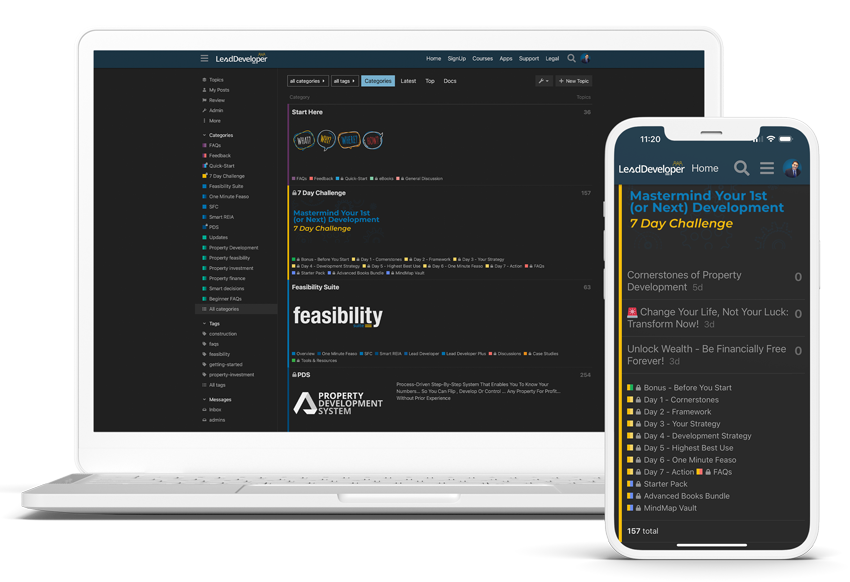
Your Real Estate Toolkit Awaits!
Free eBooks, Courses & Feasibility Suite Trial—Join Today!
✓ Unlimited FREE Trial: Experience the full power of our Feasibility Suite with hands-on demos
—explore without limits, no time pressure & without commitment or credit card!
✓ Learn from Success: Dive into real-life case studies for practical insights.
✓ Engage, Inquire, and Innovate: Ask questions, request features, and engage in lively discussions.
✓ Showcase Your Projects and Gain Insights: Share your projects and get personalised feedback.
✓ Free Resources Galore: Access a treasure trove of free resources,
eBooks & courses to keep you informed.
✓ Exclusive Training: Enjoy members-only training to sharpen your skills.
Intangible asset accounting post acquisition
The reporting entity determines an intangible asset's accounting life.
To calculate the estimated useful life for the reporting company, an intangible asset having a finite useful life is amortised using a technique that reflects how the intangible asset's economic advantages are consumed or used up.
If you can't find this pattern, you can use a straight-line amortisation method. An intangible asset's useful life is the period over which it is expected to contribute directly or indirectly to future cash flows.
The amount to be amortised for an intangible asset is the original cost less any residual value, assuming that the residual value is zero.
The above- or below-market value of in-place leases is amortised throughout the lease's remaining term and shown as a reduction or increase in rental revenue.
Real estate accounting challenges
Amenity costs
Facilities that benefit or enhance a real estate project are commonly utilised as a marketing tactic by developers, especially in a slow real estate market. Golf courses, swimming pools, lakes, parks, and marinas are desirable amenities.
Amenities may or may not be profitable. These are either sold or transferred with individual units or retained and operated by the developer. Clubhouses, for example, may be sold to a homeowners association, whereas golf courses may be retained and operated by the developer.
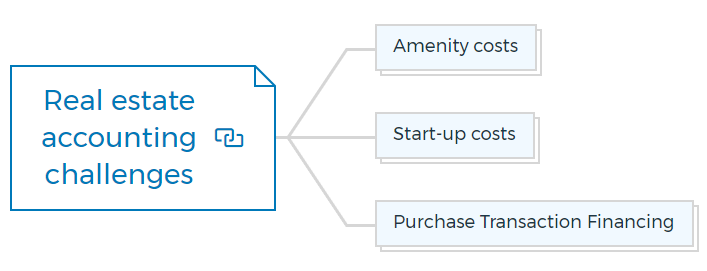
Start-up costs
These are one-time activities such as opening a new building, developing a new product or service, expanding into new markets or attracting new customers, initiating a new procedure, creating a new company, or starting a new operation. Start-up costs are expenses incurred in connection with start-up activity.
A merchant may build a new storage facility. During the facility's completion and the store opening, start-up activities such as stocking inventory, training workers, and testing registers are often performed.
These expenditures are not part of the facility's acquisition, development, or building costs; they are start-up costs.
A cost is classified as a start-up if it is incurred before operations begin or after operations begin but before typical productive capacity is reached.
Purchase transaction financing
Financing is frequently a crucial aspect of real estate acquisitions. The seller may offer finance to the buyer, or the buyer may accept the property's mortgage.
There is a presumption that the stated interest rate is fair and adequate when funding is supplied in an arms-length transaction. When this presumption is inappropriate,
- There is no stated interest rate on the note
- The reported interest rate is too high.
- The stated face amount of the note (plus any down payment) differs considerably from the current cash sales price for comparable property.
- The note's stated face amount differs significantly from its market value at the transaction time.
If financing is granted at unreasonable rates, the property should be recorded at either its fair value or an amount that approximates the market value of the note plus the fair value of any other consideration provided to the seller, whichever is more easily determinable.
Suppose no documented exchange values or market value for the note. In that case, you should calculate the present value of the note by discounting all future payments on the note using an imputed rate of interest.
At the time of the transaction, the rate used to calculate the present value of the note should be equivalent to or close to the rate at which the debtor might obtain financing from other sources.
So these were some of the basics of real estate accounting. Learn the advanced concepts of property accounting with part 2.
Final words!
Real estate accounting is an important part of the real estate industry. The principles and basic steps we've outlined are essential for anyone in the business, whether you're a developer, investor, or property manager.
If you want to get started on your own, check out our property development feasibility suite. This tool will help you estimate your next project's potential return on investment.
FAQs

